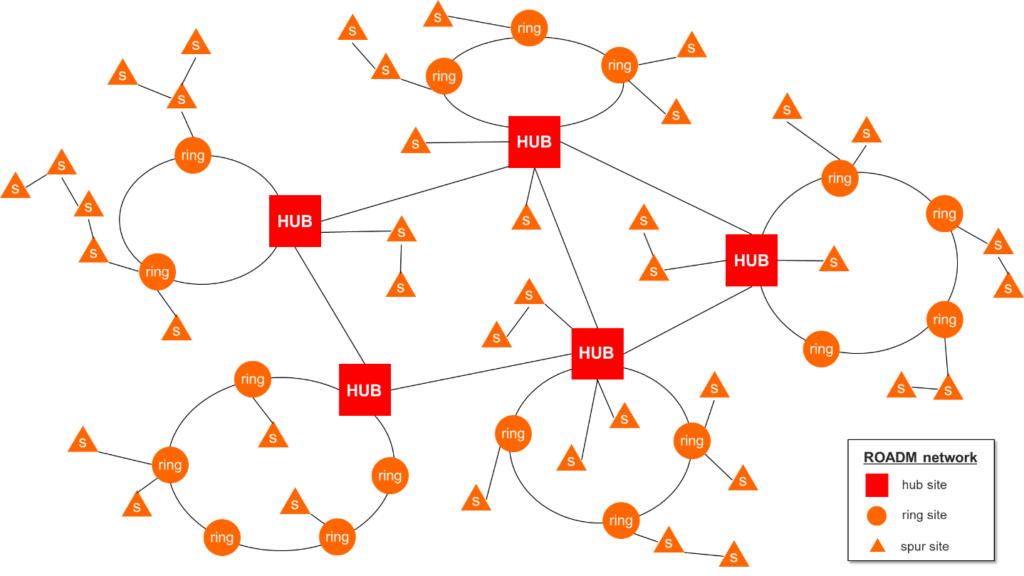The ROADM Tutorial Blogs, part 5

In the previous series of tutorials, Fujitsu’s Francois Moore explained the key functionality and benefits that underpin next-generation CDC-G ROADM: Colorless, Directionless, Contentionless, and Gridless.
In this blog, we shift our attention to the network level – specifically how to right-size ROADMs by site in order to arrive at a cost-optimized network.
Hub, ring, and spur sites in a ROADM network
First, let’s start with a representative regional ROADM network as shown in the figure below: large hub sites in key cities connecting metro rings, with spurs fanning out as needed. Dark fiber is generally assumed between sites, though managed wavelength services might be used where appropriate. In a typical ROADM network, more than 80% of the sites are spur and ring sites with less than four fiber directions (degrees).

Avoid over-engineering, particularly for small sites
This is perhaps the most important aspect of designing a cost-optimized network. But in the face of uncertainties and future growth, better safe than sorry, right? Here’s a surprising fact: a Fujitsu study of nearly 1,000 small ROADM sites (one- and two-degrees), over a seven-year period, found that less than 1% of such sites ultimately grew to be over four degrees. That’s less than 10 sites out of 1,000. Such cases are therefore the exception, rather than the rule. Building in excessive headroom is rarely necessary and is an expensive proposition. Remember that the vast majority of network sites are small, and this high percentage will magnify the cost of over-dimensioning.
Hub sites need contentionless capability
Hub sites tend to be busier, in all respects: the amount of traffic, the number of terminating and pass-through wavelengths, and the number of degrees. Over time, spectrum fragmentation can occur due to wavelength rerouting and service moves, adds and changes. Thus hub sites can benefit from contentionless ROADM capability that provides the maximum flexibility to handle wavelengths. This also holds true for busy ring sites supporting many wavelengths, whether it’s express or terminating traffic.
Choosing the right ROADM
There are other factors to consider besides the ones above, such as L-band capacity expansion, optical signal amplification (EDFA, backward Raman, or forward Raman), multi-vendor interoperability, and more. It’s too much to cover in a blog, so you can read about it in detail in this Fujitsu Application Note. It includes a decision tree that points you to the recommended combination of 1FINITY™ L-Series ROADM blades depending on network and site requirements, including future expansion. This free Omdia Webinar also explores these topics in greater detail. Instead of being a one-size-fits-all solution, different blades in the L-Series line are optimized for different scenarios. Choosing the most suitable combinations for your sites will right-size your network while down-sizing your capex.